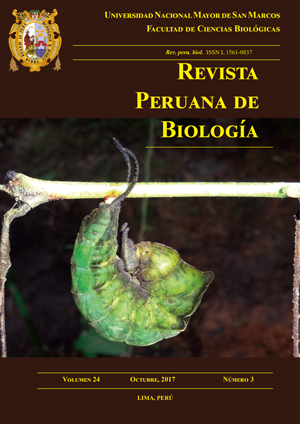Genetic differentiation of red and gray tilapia (Oreochromis niloticus) using microsatellites and SCAR markers as indicators of genetic sex
DOI:
https://doi.org/10.15381/rpb.v24i3.13900Keywords:
Tilapia, Oreochromis, microsatellites, SCAR markers, sex determinationAbstract
The aims of this work was to develop a standardized molecular protocols, to differentiate red and gray tilapia lineages using DNA microsatellites and to evaluate SCAR-5F-X/5R and SCAR-5F/5R-Y markers associated with the phenotypic sex of O. niloticus. The UNH106 microsatellite allowed differentiating genetically the lineages of red tilapia from gray. The markers UNH136, UNH115 and UNH995 presented monomorphic loci in both the red and gray tilapia in the population stock of the Centro Experimental de Genética of the Universidad Nacional de Trujillo. Fragment sizes for microsatellites and the reference gene β actin are described. The effectiveness of SCAR markers as informative in the determination of the genetic sex in XX and YY females and XY y YY males of red tilapia and XX females and XY males of gray tilapia was also confirmed.Downloads
Downloads
Published
Issue
Section
License
Copyright (c) 2017 Monica Arqueros, Linda Sánchez Tuesta, Zulita Prieto

This work is licensed under a Creative Commons Attribution-NonCommercial-ShareAlike 4.0 International License.
AUTHORS RETAIN THEIR RIGHTS:
a. Authors retain their trade mark rights and patent, and also on any process or procedure described in the article.
b. Authors retain their right to share, copy, distribute, perform and publicly communicate their article (eg, to place their article in an institutional repository or publish it in a book), with an acknowledgment of its initial publication in the Revista Peruana de Biologia.
c. Authors retain theirs right to make a subsequent publication of their work, to use the article or any part thereof (eg a compilation of his papers, lecture notes, thesis, or a book), always indicating its initial publication in the Revista Peruana de Biologia (the originator of the work, journal, volume, number and date).






